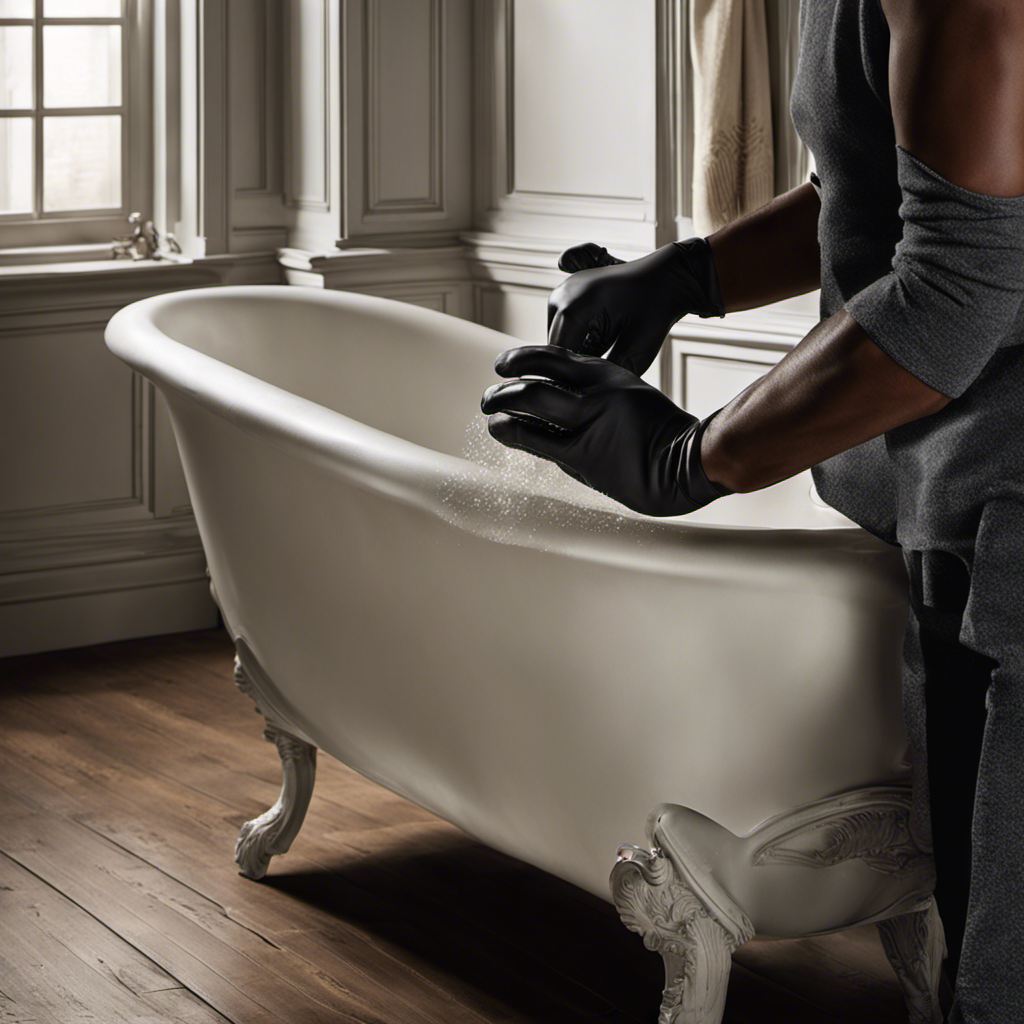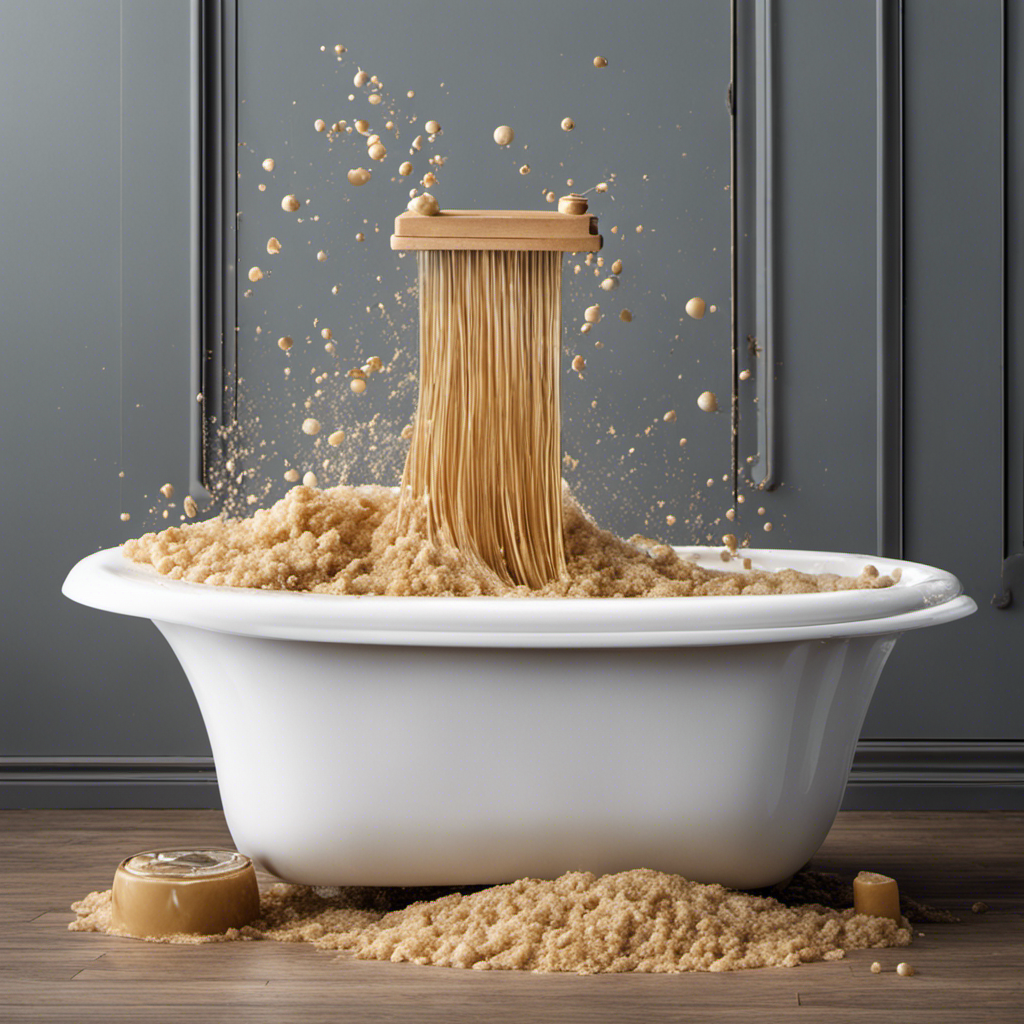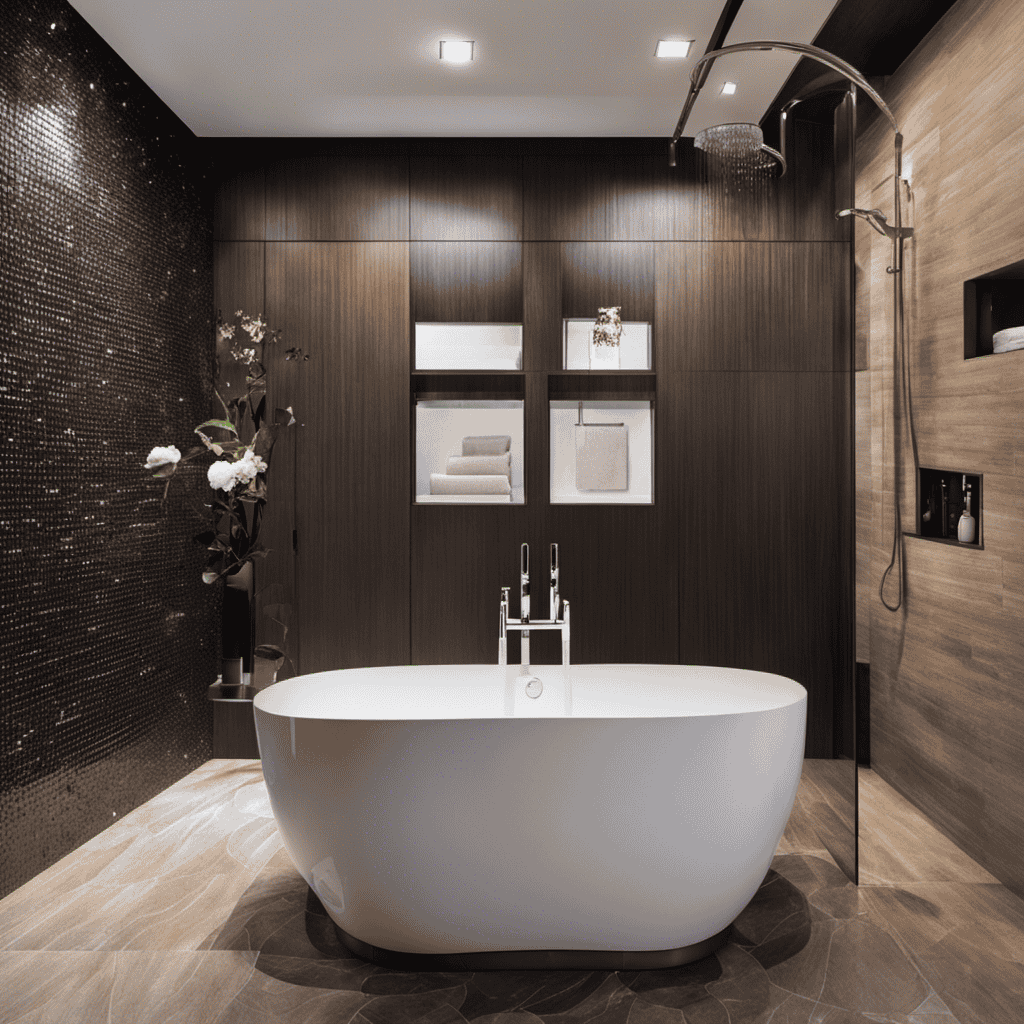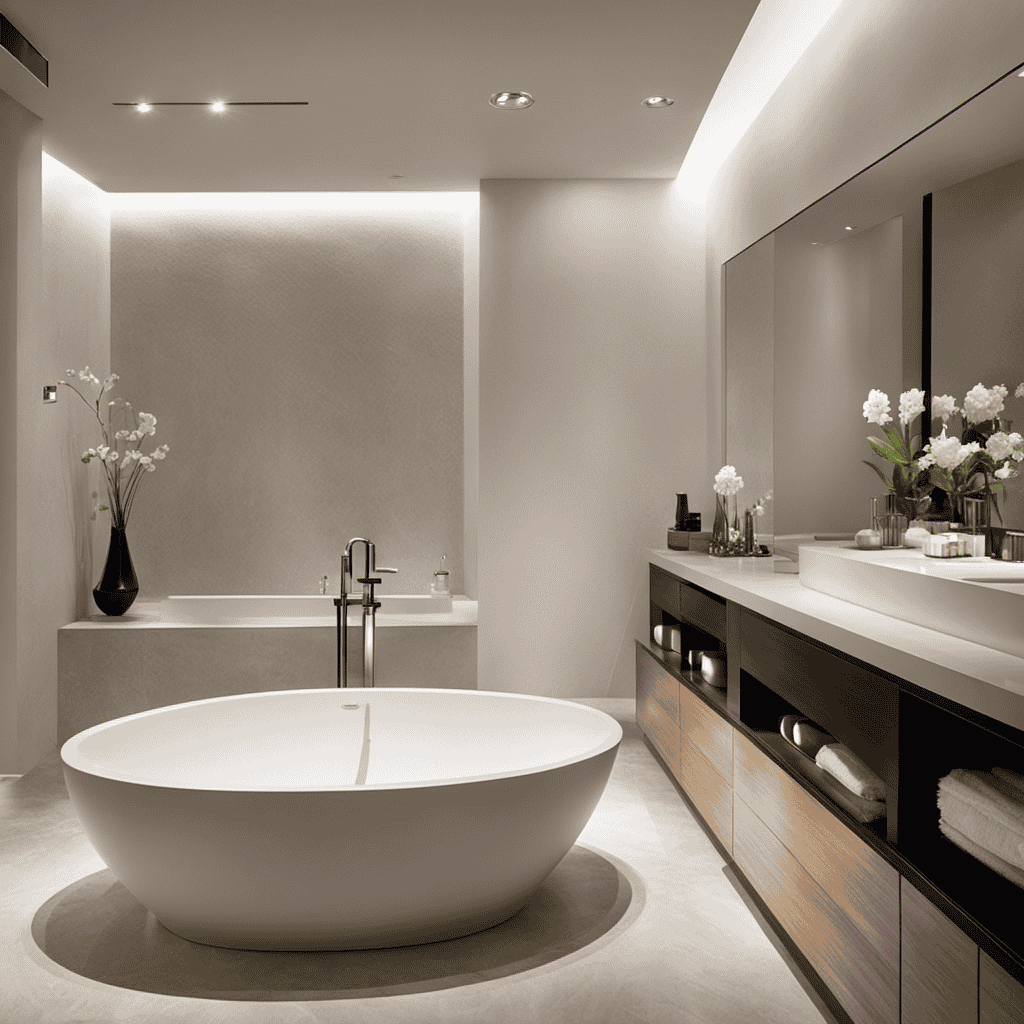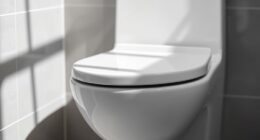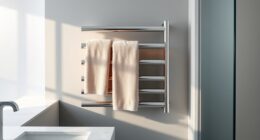When it comes to creating a luxurious and functional bathroom, one important fixture to consider is the alcove bathtub. These versatile tubs are perfect for maximizing space while adding a touch of elegance to any bathroom.
In this article, I will delve into the definition of an alcove bathtub, explore different types available, discuss the pros and cons, and provide tips for choosing the right size.
Additionally, I will guide you through the installation process and offer ideas for enhancing the overall look of your alcove bathtub.
So, let’s dive in and discover the world of alcove bathtubs!
Key Takeaways
- Alcove bathtubs are designed to fit into a three-walled recess, saving space and offering versatility.
- They come in different styles, sizes, shapes, and materials such as acrylic and fiberglass.
- Alcove tubs save space in smaller bathrooms and are easier to install due to the three-walled enclosure.
- Popular materials for alcove tubs include acrylic and fiberglass, known for their durability, resistance to cracks/stains/chipping/fading, and heat retention.
The Definition of an Alcove Bathtub
An alcove bathtub is a type of bathtub that is specifically designed to fit into a three-walled recess. It is a popular choice for bathroom designs due to its space-saving nature and versatility.
There are different alcove bathtub styles available in the market, ranging from traditional to modern designs, allowing homeowners to find the perfect fit for their bathroom aesthetic.
When it comes to alcove bathtub installation, there are a few tips to keep in mind. First, ensure that the alcove walls are properly prepared and waterproofed before installation.
Secondly, measure the space accurately to ensure a snug fit.
Lastly, consider hiring a professional plumber to assist with the installation, as they have the expertise and experience to ensure a seamless and secure installation.
Different Types of Alcove Bathtubs
When it comes to alcove tubs, there are several key points to consider: the benefits, the materials used, and the installation methods.
Alcove tubs offer numerous advantages, such as their space-saving design and affordability. They are typically made from durable materials like acrylic or fiberglass, which are easy to clean and maintain.
As for installation methods, alcove tubs can be installed as a three-wall alcove or a recessed alcove, depending on the bathroom layout and personal preferences.
Benefits of Alcove Tubs
One of the benefits of alcove tubs is that they save space in smaller bathrooms. This is especially important when you have limited square footage and need to maximize every inch.
Here are a few other advantages of alcove tubs:
-
Affordability: Alcove tubs are generally more budget-friendly compared to freestanding tubs, making them a great option for those on a tight budget.
-
Ease of installation: Alcove tubs are designed to fit snugly into a three-walled enclosure, which means they are easier to install compared to freestanding tubs.
-
Versatility: Alcove tubs come in various sizes, shapes, and styles, allowing you to find the perfect fit for your bathroom decor.
-
Accessibility: Alcove tubs are often equipped with features such as built-in grab bars and slip-resistant surfaces, making them a safer option for people with mobility concerns.
When it comes to small bathrooms, alcove tubs are the practical choice for saving space without compromising on style and functionality.
Alcove Tub Materials
To maximize the durability and longevity of your alcove tub, you should consider using materials like acrylic or fiberglass.
When it comes to alcove tub material comparison, these two options stand out for their durability and low maintenance requirements.
Acrylic is a popular choice due to its lightweight yet strong nature. It is resistant to cracks and stains, making it easy to clean and maintain.
Fiberglass, on the other hand, is known for its strength and affordability. It is resistant to chipping and fading, making it a long-lasting option.
Both materials offer excellent heat retention, ensuring a comfortable bathing experience.
Before making a decision, consider your specific needs and preferences to choose the best material for your alcove tub.
Alcove Tub Installation Methods
For a seamless installation, you should consider using the adhesive method when installing your tub. This method offers numerous benefits and ensures a secure and long-lasting installation.
Here are some best practices for alcove tub installation:
-
Prepare the surface: Before applying the adhesive, make sure the surface is clean and free from any debris or moisture.
-
Apply the adhesive: Use a high-quality adhesive specifically designed for tub installation. Follow the manufacturer’s instructions for proper application.
-
Secure the tub: Once the adhesive is applied, carefully position the tub in the alcove and press it firmly against the wall.
-
Allow drying time: Give the adhesive enough time to cure and dry before using the tub to ensure a strong bond.
Alcove tub installation can present challenges, but by following these best practices, you can achieve a professional and reliable installation.
Pros and Cons of Alcove Bathtubs
The pros of alcove bathtubs include their space-saving design and easy installation. Alcove tubs are a popular choice for smaller bathrooms because they fit snugly against three walls, maximizing floor space. They are also relatively easy to install, making them a convenient option for homeowners.
However, there are cons to consider as well. One drawback is the limited customization options compared to freestanding tubs, as alcove tubs are designed to fit a specific space. Additionally, some people may find alcove tubs less comfortable due to their smaller size and lack of additional features like jets or built-in seating.
To maintain an alcove tub, it is important to regularly clean and dry the tub to prevent mold and mildew buildup. Using non-abrasive cleaners and avoiding harsh chemicals will help preserve the tub’s finish.
How to Choose the Right Size Alcove Bathtub
When choosing the right size for your alcove tub, it’s important to consider the dimensions of your bathroom and how much space you have available. Here are some tips for choosing the perfect size for your alcove bathtub:
- Measure the length and width of your bathroom to determine the maximum size of the tub that will fit.
- Consider the depth of the tub to ensure it is comfortable for soaking.
- Take into account any other fixtures or furniture in the bathroom that may affect the placement of the tub.
- Think about your personal preferences and needs, such as whether you prefer a larger tub for more luxurious baths or a smaller tub to save space.
When it comes to choosing the material for your alcove bathtub, options include acrylic, fiberglass, and porcelain. Each material has its own pros and cons, so be sure to do your research and choose one that suits your needs and budget.
As for installation tips, it’s best to consult a professional to ensure proper placement and connection of plumbing fixtures.
Installation Process of an Alcove Bathtub
Before beginning the installation process of an alcove bathtub, there are several important factors to consider.
First, you may need to make plumbing modifications to accommodate the new fixture. This could involve relocating pipes or installing additional connections.
Second, proper waterproofing techniques are crucial to prevent any water damage to the surrounding walls and floors.
Required Plumbing Modifications
To install an alcove bathtub, you’ll need to make some plumbing modifications. Here are the plumbing requirements and the installation process for an alcove bathtub:
-
Ensure proper drainage: Install a drainpipe that can handle the water flow from the bathtub. This may require rerouting existing plumbing or creating a new drainage system.
-
Supply water lines: Connect the hot and cold water lines to the bathtub. Install shut-off valves to control the water flow and allow for easy maintenance.
-
Ventilation: Install a ventilation system to prevent moisture buildup in the bathroom. This will help prevent mold and mildew growth.
-
Secure the bathtub: Use sturdy mounting brackets to secure the alcove bathtub to the walls. This will ensure stability and prevent any accidents.
Proper Waterproofing Techniques
One important step in installing a bathtub is ensuring proper waterproofing techniques are used. Waterproofing products play a crucial role in preventing water damage and maintaining the integrity of the installation. There are various products available in the market that can effectively waterproof the surrounding areas of the bathtub, such as waterproof membranes, sealants, and waterproofing paints. These products create a barrier that prevents water from seeping into the walls, floors, or adjacent areas. However, it is essential to avoid common waterproofing mistakes, such as improper application or inadequate coverage. These mistakes can lead to leaks, mold growth, and costly repairs down the line. Therefore, it is crucial to carefully follow the manufacturer’s instructions and consult professionals if needed. Proper waterproofing ensures a long-lasting and durable bathtub installation.
When considering the installation of a bathtub, it is also important to take into account time and cost considerations.
Time and Cost Considerations
When installing a bathtub, it’s crucial for you to consider the time and cost associated with the project. Proper planning and budgeting are essential to ensure a smooth and efficient installation process. Here are some key factors to keep in mind:
- Research and choose the right bathtub for your needs, considering factors like size, material, and style.
- Hire a professional contractor who specializes in bathtub installations to ensure a high-quality and timely job.
- Obtain the necessary permits and inspections to comply with local building codes.
- Factor in additional costs such as plumbing modifications, tile work, and accessories.
Once your alcove tub is installed, regular maintenance is essential to keep it in good condition. Follow these tips for alcove tub maintenance:
- Clean your tub regularly using mild cleaners and avoid abrasive materials that could damage the surface.
- Check for any leaks or cracks and repair them promptly to prevent further damage.
- Keep the surrounding area clean and clear of any debris to prevent clogging and drainage issues.
- Follow the manufacturer’s instructions for any specific maintenance requirements.
Taking these considerations into account will help ensure a successful bathtub installation process and proper alcove tub maintenance.
Maintenance Tips for Alcove Bathtubs
Take a moment to consider the maintenance tips for your alcove bathtub.
Keeping your alcove bathtub clean is essential to prevent the growth of mold and mildew. Regular cleaning is necessary to maintain its pristine condition. Start by wiping down the surfaces of the bathtub with a non-abrasive cleaner. Be sure to pay attention to the corners and crevices where dirt can accumulate.
To prevent mold, it is important to keep the area around the bathtub well-ventilated and dry. After each use, make sure to wipe down the tub and remove any excess water. Additionally, using a mildew-resistant caulk and regularly inspecting and repairing any cracks or leaks can help prevent water damage and mold growth.
Popular Materials Used for Alcove Bathtubs
Popular materials for alcove bathtubs include acrylic, fiberglass, and cast iron. Each material has its own pros and cons, so it’s important to consider them when choosing the right alcove tub for your bathroom.
-
Acrylic: It is lightweight, durable, and easy to clean. However, it may scratch easily and can fade over time.
-
Fiberglass: It is affordable and lightweight, making it easy to install. But it may not be as durable as other materials and can also scratch easily.
-
Cast iron: It is extremely durable and retains heat well, providing a luxurious bathing experience. However, it is heavy and may require additional support during installation.
When selecting the size of your alcove tub, consider the available space in your bathroom and the number of people who will be using it.
Transition: Now that you have chosen the right material and size for your alcove bathtub, let’s explore how to enhance its look and create a spa-like atmosphere in your bathroom.
Enhancing the Look of Your Alcove Bathtub
Now that you’ve chosen the right material and size for your tub, let’s see how you can enhance its look and create a spa-like atmosphere in your bathroom.
One of the easiest ways to elevate the aesthetics of your alcove bathtub is by choosing the right accessories. Consider adding a stylish shower curtain, bath mat, and towels that complement the color scheme of your bathroom. Additionally, incorporating some decorative elements like candles, plants, or artwork can create a soothing ambiance.
When it comes to cleaning your alcove bathtub, there are a few tips to keep in mind. Use non-abrasive cleaners and avoid harsh chemicals that can damage the surface. Regularly scrub the tub with a soft brush or sponge to prevent soap scum buildup.
Transitioning to the next section, let’s now explore the differences between alcove bathtubs and other bathtub styles.
Alcove Bathtubs Vs. Other Bathtub Styles
When it comes to choosing a bathtub style, there are several factors to consider.
One of the key points of debate is the space efficiency of alcove bathtubs compared to other styles.
Additionally, the design and aesthetics of different bathtub styles can greatly vary, which is another important aspect to take into account.
Space Efficiency Debate
The alcove bathtub is a space-efficient option for small bathrooms. It is designed to fit snugly into a three-wall recess, maximizing the use of limited space.
Here are some of the space-saving benefits and alcove tub design options to consider:
-
Compact Size: Alcove tubs are typically smaller in size compared to freestanding or corner tubs, making them ideal for small bathrooms.
-
Built-in Shelving: Many alcove tubs come with built-in shelving, providing convenient storage options for bath essentials.
-
Customizable Surrounds: Alcove tubs offer various surround options, such as tile, acrylic, or fiberglass, allowing you to personalize the look and feel of your bathroom.
-
Shower Compatibility: Alcove tubs can easily be paired with a showerhead and curtain rod, making them versatile and space-saving solutions for those who prefer both bathing and showering.
Overall, the alcove bathtub is a practical choice for small bathrooms, offering both functionality and style.
Design and Aesthetics Comparison
If you’re looking for a stylish option, you might consider comparing the design and aesthetics of different alcove tub surrounds.
When it comes to design trends, there are several options to choose from. One popular trend is the use of clean lines and minimalist designs. These alcove tub surrounds often feature sleek and simple shapes, creating a modern and sophisticated look for your bathroom.
Another trend is the incorporation of natural elements, such as wood or stone accents, to add a touch of warmth and organic beauty to the space.
In terms of color options, you can find alcove tub surrounds in a wide range of shades and finishes. From classic white to bold and vibrant hues, there is a color option to suit every style and preference.
Budget-Friendly Alcove Bathtub Options
You can find budget-friendly alcove bathtub options that won’t break the bank. When it comes to choosing an alcove bathtub that is both affordable and high-quality, there are several options to consider. Here are some budget-friendly choices to help you make the right decision:
- Acrylic alcove bathtubs: These are cost-effective and lightweight, making them easy to install.
- Fiberglass alcove bathtubs: They are durable and offer a wide range of design options.
- Cast iron alcove bathtubs: Although slightly more expensive, they provide excellent heat retention and durability.
- Steel alcove bathtubs: These are budget-friendly and resistant to scratches and stains.
When installing a budget-friendly alcove bathtub, make sure to follow these tips: measure the space accurately, choose the right size and style, and hire a professional plumber for proper installation.
Now, let’s move on to the frequently asked questions about alcove bathtubs.
Frequently Asked Questions About Alcove Bathtubs
Now let’s dive into some FAQs about alcove bathtubs.
Proper alcove bathtub installation is crucial to ensure a long-lasting and functional bathing experience. One common problem is water leakage, which can occur if the bathtub is not properly sealed against the walls. To avoid this, it’s important to use a high-quality waterproof sealant and follow the manufacturer’s instructions carefully.
Another common issue is inadequate support for the bathtub, leading to structural problems over time. To prevent this, make sure to use proper reinforcement, such as a mortar bed or a sturdy frame, as recommended by the manufacturer.
It’s also important to regularly inspect the bathtub for any signs of damage or wear, as prompt repairs can prevent bigger problems down the line.
Frequently Asked Questions
Are Alcove Bathtubs Suitable for Small Bathrooms?
Yes, alcove bathtubs are a great space-saving solution for small bathrooms. They fit snugly against the walls, maximizing the available space. However, there are alternatives like corner or freestanding bathtubs that can also be suitable for small bathrooms.
Can I Install an Alcove Bathtub in an Existing Bathroom?
Yes, you can install an alcove bathtub in an existing bathroom. It’s a great choice for maximizing space and adding a touch of luxury. The benefits of alcove bathtubs include easy installation and a sleek, streamlined look.
What Is the Average Cost of an Alcove Bathtub?
The average cost of installing an alcove bathtub varies depending on factors such as material, size, and additional features. It is important to consider these factors and consult with a professional to get an accurate estimate.
Are Alcove Bathtubs Easy to Clean?
Yes, alcove bathtubs are easy to clean. Regular maintenance is important, and here are some cleaning tips: use mild soap and water, avoid abrasive cleaners, and wipe dry to prevent water stains.
Can I Add Jets or Other Features to an Alcove Bathtub?
Yes, you can add jets and other features to an alcove bathtub. It all depends on the materials used and the design options available. It’s a great way to enhance your bathing experience.
Conclusion
In conclusion, an alcove bathtub is a popular choice for homeowners who want a practical and space-saving bathing option. With different types to choose from, such as soaking, whirlpool, and shower-tub combinations, there is an alcove bathtub to suit every preference.
While there are pros and cons to consider, the right size alcove bathtub can be chosen by considering the available space and individual needs. The installation process may require professional help, but with proper care and maintenance, an alcove bathtub can enhance the look and functionality of any bathroom.
Compared to other bathtub styles, alcove bathtubs are often more budget-friendly, making them an attractive option for many homeowners.



